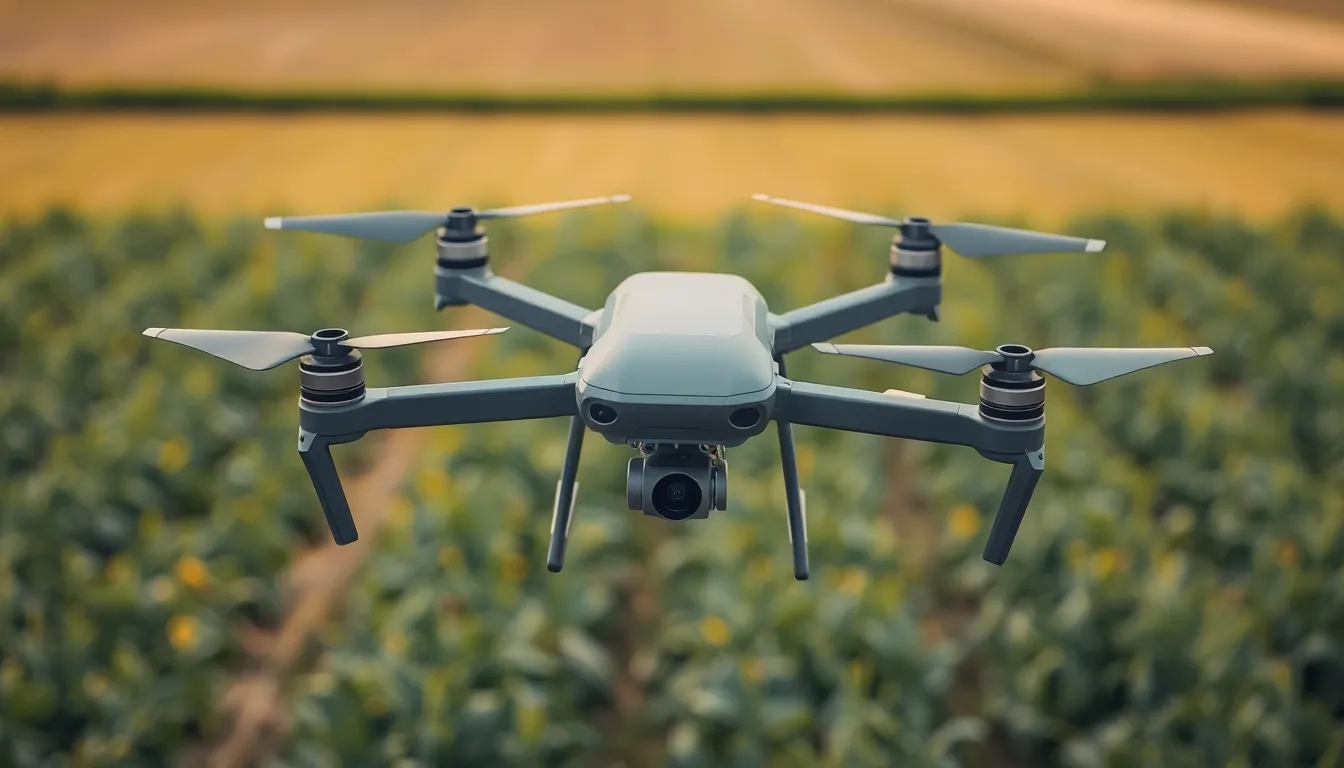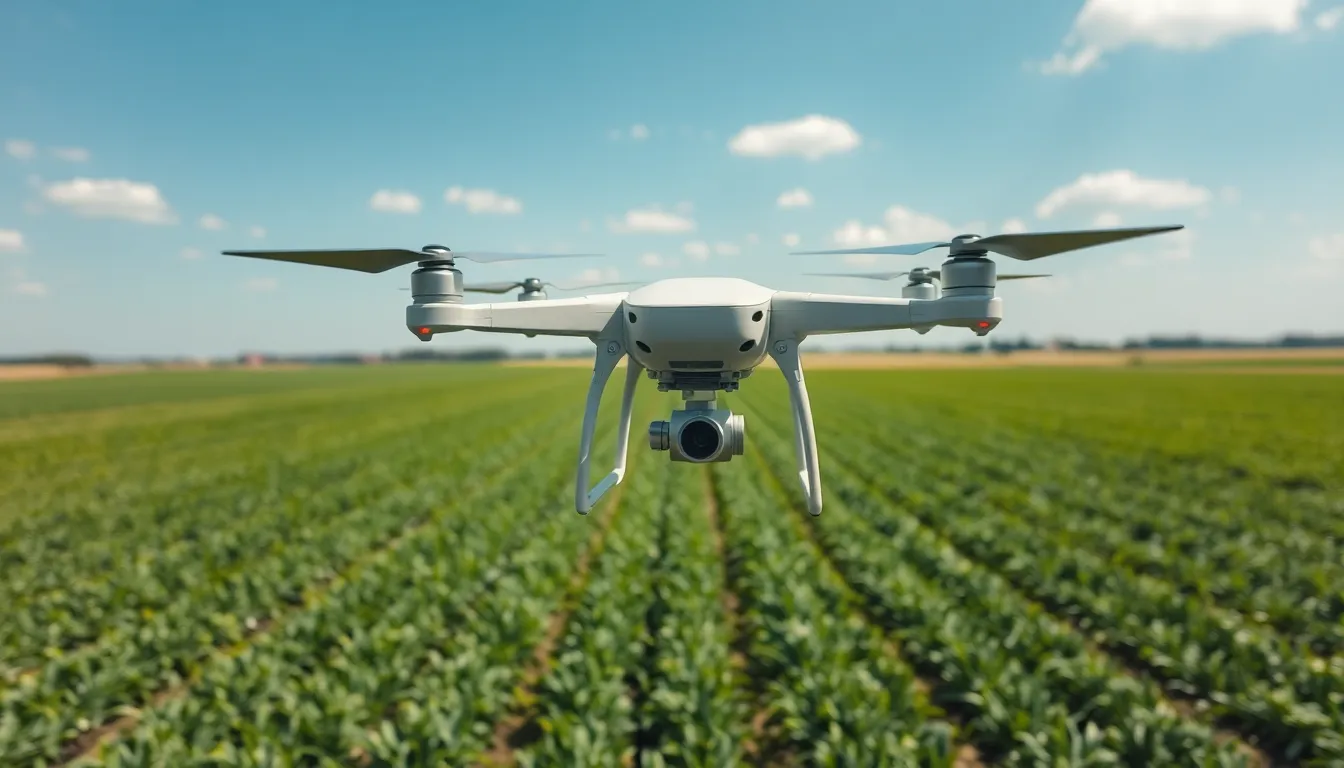In a world where even your coffee maker can connect to Wi-Fi, it’s no surprise that drones are taking the spotlight in monitoring solutions. These high-flying marvels aren’t just for delivering pizza or capturing epic selfies; they’re revolutionizing how industries track, manage, and analyze data from above. Imagine a bird’s-eye view that helps businesses save time and money while keeping an eye on everything from construction sites to agricultural fields.
With drone monitoring solutions, organizations can say goodbye to tedious ground inspections and hello to real-time insights. Whether it’s surveying vast landscapes or inspecting hard-to-reach infrastructures, drones make the impossible possible. And let’s be honest, who wouldn’t want to watch their operations unfold from the comfort of a cozy chair? Buckle up as we dive into the world of drone monitoring and discover how these flying wonders can elevate your business to new heights.
Table of Contents
ToggleOverview of Drone Monitoring Solutions
Drone monitoring solutions utilize aerial technology to enhance data collection and management across diverse sectors. These solutions effectively reduce the time spent on ground inspections, often replacing them with efficient aerial surveys. Industries such as agriculture, construction, and energy benefit significantly from drone applications, gaining access to real-time insights and actionable data.
In agriculture, drones gather information about crop health, soil quality, and irrigation needs, allowing farmers to make informed decisions. Construction sites leverage drones for progress monitoring, providing an overview of timelines and resource allocation. Aerial inspections of infrastructure like power lines and bridges offer detailed images and videos that highlight maintenance needs, minimizing safety risks.
Numerous features make drone monitoring solutions attractive. High-resolution cameras and advanced sensors enable detailed data capture. Additionally, autonomous flight capabilities allow drones to perform missions without constant human input, freeing up valuable labor resources. Software integration ensures data analysis is straightforward, making it easy to interpret findings.
Cost-effectiveness represents another advantage. By reducing the need for traditional inspection methods, organizations can lower operational expenses. When considering compliance requirements, drones also help maintain safety standards, thereby minimizing liability.
Drone monitoring solutions play a crucial role in modernizing how industries conduct inspections and track data. Real-time analytics, reduced costs, and improved safety create opportunities for efficiency, ultimately transforming business operations and decision-making processes.
Benefits of Drone Monitoring Solutions

Drone monitoring solutions provide transformative advantages across industries, improving efficiency and operational effectiveness. Their applications yield enhanced insights, particularly critical for resource management.
Enhanced Data Collection
Enhanced data collection stands at the forefront of drone monitoring solutions. Drones utilize high-resolution cameras and advanced sensors to gather accurate information. They deliver real-time data on environmental conditions, infrastructure status, and agricultural health. Detailed imagery from aerial perspectives enables precise analysis. Organizations can identify trends and issues effectively through extensive coverage of large areas. Integration with analytics software allows teams to visualize complex datasets easily, leading to informed decision-making. Predictive analytics can help organizations anticipate future challenges and strategize accordingly.
Cost-Effectiveness
Cost-effectiveness significantly contributes to the appeal of drone monitoring solutions. Organizations experience considerable savings on operational expenses, especially when comparing drone use to traditional inspection methods. Reduced labor costs emerge from decreased reliance on personnel for hazardous tasks. Drones diminish maintenance costs by identifying issues before they escalate into expensive repairs. Safety standards improve, which lowers liability risks associated with manual inspections. Long-term asset management becomes less costly, ensuring an optimal return on investment. By minimizing downtime and enhancing resource allocation, drones help companies achieve maximum efficiency.
Key Features to Look For
Drone monitoring solutions offer critical features that enhance their effectiveness in various applications. These technologies significantly streamline processes across industries.
Real-Time Data Processing
Real-time data processing allows drones to gather and analyze information instantly. This capability helps organizations make informed decisions based on current conditions. Advanced algorithms process data from high-resolution cameras and sensors quickly, yielding actionable insights. Fast data transmission by drones ensures stakeholders receive updates without delay. Immediate access to information boosts efficiency and responsiveness in dynamic environments. Monitoring agricultural conditions with real-time data enhances crop management strategies.
Integration with Other Technologies
Integration with other technologies is essential for maximizing drone capabilities. Seamless compatibility with Geographic Information System (GIS) software enhances data visualization and analysis. This integration improves the strategic planning process. Drones can also connect to cloud platforms, facilitating data storage and sharing across teams. The incorporation of Internet of Things (IoT) devices allows drones to interact with various systems, enabling automated workflows. Enhanced analytics tools harness the power of drone data, leading to better operational insights and decision-making.
Popular Drone Monitoring Solutions on the Market
Drone monitoring solutions continue to evolve, offering organizations robust tools for various applications. Here are two notable solutions that stand out in the market.
Solution 1: Features and Use Cases
DJI Matrice 300 RTK excels in precision and versatility. This drone comes equipped with a powerful flight system, thermal cameras, and advanced sensors, making it ideal for infrastructure inspections and search-and-rescue operations. Operators can conduct detailed aerial surveys of facilities, assessing condition and safety without exposing personnel to risks. Its real-time data streaming capability enhances situational awareness, enabling timely decision-making. Organizations in energy, construction, and public safety leverage this technology for tasks ranging from monitoring power lines to assessing construction sites.
Solution 2: Features and Use Cases
Parrot Anafi USA offers portability and high-resolution imaging. This drone features a 32x zoom camera, allowing users to capture intricate details of structures and landscapes. Its lightweight design facilitates easy transport, making it suitable for rapid deployment in diverse environments. Industries like agriculture and emergency response benefit from this solution, utilizing it to monitor crop health and assess disaster zones. Autonomous flight patterns enable efficient data collection, while a secure encrypted connection ensures data integrity during transmission.
Challenges and Limitations
Drone monitoring solutions face several challenges that impact their effectiveness. Regulatory restrictions often hinder drone operations, especially in urban areas or near airports. Compliance with local laws may require permits or special certifications that complicate deployment.
Environmental factors also pose significant limitations. Adverse weather conditions, such as high winds, rain, or snow, can disrupt flight stability, leading to inaccurate data collection. Drones may also struggle to operate at night or in low-light situations, affecting their utility in various operational scenarios.
Operational costs can escalate, despite the initial cost savings associated with drone technology. Maintenance and repair expenses accumulate over time, particularly for high-end models with advanced features. Training personnel to operate drones proficiently adds to the overall investment.
Data management remains a critical issue. Drones generate vast amounts of data that require effective storage and processing solutions. Without robust data integration systems, organizations struggle to analyze and utilize collected information efficiently.
Limited battery life impacts the operational range and duration of drones. Short flight times necessitate frequent charging or battery swaps, restricting their use for extensive monitoring tasks. Thus, maximizing efficiency becomes essential to achieve optimal coverage.
Security concerns also arise with drone usage. Cybersecurity threats may compromise sensitive data collected during missions. Implementing secure transmission methods and protocols is crucial to mitigate risks.
Overall, the challenges and limitations faced by drone monitoring solutions require careful consideration and planning. Organizations must address these issues to fully leverage drone technology’s potential in enhancing operational efficiency and data management.
Drone monitoring solutions are revolutionizing how industries approach data collection and operational efficiency. With their ability to provide real-time insights and detailed imagery, organizations can make informed decisions quickly. The integration of advanced technology and software not only simplifies data management but also enhances safety and reduces costs.
Despite facing challenges like regulatory restrictions and data security concerns, the benefits of drone technology far outweigh the drawbacks. As organizations continue to embrace these innovations, they’ll likely unlock even greater efficiencies and improvements in their processes. The future of monitoring solutions is undoubtedly in the skies, and those who adapt will thrive in an increasingly competitive landscape.



